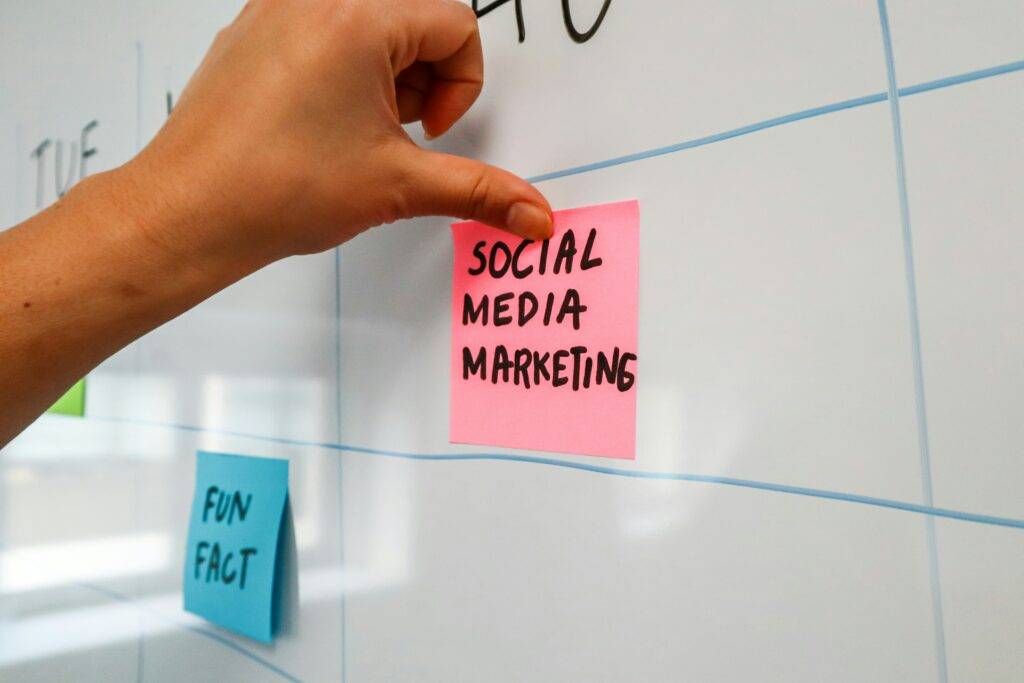 In Part 1, we reframed what digital fundraising is really about: not just mastering tools, but learning to connect with heart and humanity — in the places your donors already live: online.
In Part 1, we reframed what digital fundraising is really about: not just mastering tools, but learning to connect with heart and humanity — in the places your donors already live: online.
Now, it’s time to turn insight into action.
Whether you’re launching your first online campaign or refining what you’re already doing, these four essentials will help you reach more donors, raise more dollars, and deepen relationships — all while staying true to your mission.
💡 Aha! Moment: A Great Digital Campaign Starts the Same Way Every Great Campaign Does — With Meaning. Digital doesn’t change why people give. It changes how they encounter your message. Donors aren’t looking for more content — they’re looking for something that cuts through the noise. Something true. Something that moves them. Something that makes giving feel like a no-brainer — and makes it easy to act. Your first job isn’t tactical. It’s emotional. But after that, the tactics must be seamless.
Four Essentials for Running a Successful Online Fundraising Campaign
You don’t need to be everywhere or do everything. But if you want your digital fundraising to gain traction — and grow over time — these four building blocks will set you up for success.
1. Set a Clear, Compelling Goal
Online donors aren’t mind readers. They don’t know what you need unless you tell them — clearly, specifically, and with a sense of purpose and urgency.
That means skipping the vague generalities (“support our mission!”) and getting laser-focused:
- What exactly are you raising money for?
- Why now?
- What impact will this gift make possible?
- What’s the deadline?
- What happens if you don’t reach the goal?
And don’t forget: a compelling goal isn’t just about numbers. It’s about meaning. Donors want to solve a problem — not fund a budget line item.
The magic is in the “because…”
We’re raising $50,000 because 100 unhoused families must move into safe, stable housing before winter hits.
That’s not just a goal. That’s a story in progress — one your donor can step into.
✅ Action Tip: Before you write a word of your appeal, answer this: If someone only saw your goal, would they immediately know what matters and why it matters now? If not, revise until the answer is yes.
2. Lead with Story, Not Structure
Too often, nonprofit appeals follow a rigid format: introduction, problem, solution, ask, reiterate. While that blueprint can provide helpful scaffolding, it can also lead to appeals that feel mechanical and forgettable.
The truth is, donors don’t respond to outlines. They respond to emotion.
The most compelling campaigns invite donors into a real moment — one that taps into shared values, evokes feeling, and creates urgency.
Instead of saying, “We’re raising funds for our afterschool program,” say:
“Every weekday, 11-year-old Maya waits for her mom to get off a double shift. But on Wednesdays, she’s not alone — she’s at our afterschool reading lab, laughing with her favorite volunteer, Carla. That hour changes everything.”
Why it works?
Stories are something people can visualize.
They share a real moment, offering an emotional on-ramp that leads directly to your ask.
Stories light up the brain. They create empathy. And they make it easier for donors to see their role in the solution — not as passive helpers, but as co-authors of a better ending.
So, by all means, plan your structure. Just make sure the story leads the way.
✅ Action Tip: Choose one person, animal, place or thing your work helped recently. Something that moved you. Write a short paragraph about that one event — what was faced, what changed, and what made the change possible. That’s your lead story. Use it to open your appeal – with emotion and passion.
3. Promote Like You Mean It
You can write the most moving appeal in the world… but if no one sees it, it won’t raise a dime.
In today’s landscape, “if you build it, they will come” is not a fundraising strategy. Promotion isn’t an afterthought — it’s half the work.
Most nonprofits hit “send” on an email, post once on social, and move on. But digital fundraising lives (and dies) by repetition and reach – or lack thereof.
Visibility is as important as messaging!
Promotion isn’t just about picking the right channel or timing your posts. It’s about giving people a reason to care and making it easy for them to act.
But here’s the challenge: if you’re a small organization without a big following or viral track record, it’s easy to feel like your post will vanish into the void. And honestly, without a strategy, it might.
Here’s how to tip the odds in your favor:
- Start with your inner circle. Ask your board, volunteers, staff, and closest supporters to engage with your content—like it, share it, comment on it. Their activity helps trigger the algorithm to show your content to more people.
- Be direct and personal. Instead of posting “please share,” reach out 1:1 to people in your network. Personal appeals — “Hey, would you share this on your story today?”— go a lot further than generic asks. Word of mouth (W.O.M.) has always been a key advertising strategy, so your job in the digital environment is to proactively make W.O.M. happen.
- Create shareable content. Think about what makes someone want to share: Is it useful? Emotional? Surprising? Celebrate your supporters, show real impact, or post something your audience would be proud to associate with.
- Tag people and partners. If you mention a donor, partner, or community member, tag them. They’re more likely to re-share, which introduces your post to their network.
- Consistency beats flash. Virality is rare. What works more often is steady, authentic engagement. Post regularly. Celebrate small wins. Share behind-the-scenes moments. Build trust over time.
Remember: engagement is a two-way street. Don’t just broadcast.
Respond (right away) to comments, share other people’s content, and cheer on your community. Over time, people won’t just like your posts—they’ll believe in your cause.
✅ Action Tip: Pick three channels you’ll use to promote your campaign. For each, create a mini-content plan: (1) What will you post or send? (2) How often? (3) Who can help you share it? Then put it on your calendar — because what gets scheduled gets done.
4. Choose the Right Tools for the Job
Digital fundraising doesn’t work without, well… digital tools.
Alas, too many nonprofits try to “make do” with systems that are clunky, outdated, or stitched together from mismatched parts. Too often they rely on manual workarounds that exhaust staff and frustrate donors.
Technology shouldn’t be a barrier. It should be a bridge.
Between you and your donors. Between your message and their motivation. Between their impulse to give and your ability to receive their gift — seamlessly, securely, and in real time.
That doesn’t mean you need the fanciest or most expensive software (see here for free software tools; see here for a range of options). But it does mean you need tools that:
- Work reliably on mobile and desktop
- Make giving quick, easy, and secure
- Take into account today’s donors preferred methods of giving
- Let you customize messages and segment audiences
- Help you automate follow-up and stewardship
- Allow for peer-to-peer and/or DIY fundraising
And perhaps most important, you need tools your team actually knows how to use.
Because if you’re not using the tools you have, they’re not assets — they’re expensive obstacles.
✅ Action Tip: Take inventory. What are you using now for online donations, email, donor tracking, and social? What’s working? What’s frustrating?
Pick one tool to evaluate or upgrade this year — and assign someone to lead that charge. Even small improvements (like switching to a mobile-friendly form) can yield big results.🤝 Bonus Action Tip: Make training useful, usable, and repeatable
Once your team is open to trying something new, the next step is making sure they actually retain what they learn — and can confidently apply it. Skip the one-time webinar or dense manual. Instead, build support that sticks:
-
Break it down. Offer short, focused trainings that teach one thing at a time — like “How to segment an email list” or “How to post a fundraising story to Instagram.” Avoid overwhelming sessions that try to cover everything.
-
Train inside real workflows. Teach people how to use tools while doing real tasks — setting up an actual campaign, creating a donor list, sending a test email. Context helps learning stick.
-
Document the basics. Create simple how-to guides or short screen-recorded videos. These become go-to refreshers whenever someone gets stuck.
- Check in after training. Ask what’s working, what’s confusing, and what people need next. Learning is a process, not a one-and-done.
Reminder: The goal isn’t to make everyone a tech expert. It’s to make digital feel less intimidating — so your team feels empowered to use the tools, not afraid of them.
Conclusion: Two Truths, One Path Forward
The new rules of fundraising aren’t just about adopting digital tools. And they’re not just about being more human.
They’re about both — at once.
Human-first, digital-fast.
You must connect emotionally and deliver seamlessly.
Tell stories that move people and use tools that make action easy.
Yes, it takes intention. And yes, it takes commitment to learning.
But the good news? You already know how to build relationships. That’s what great fundraising has always been about. Now, it’s just about bringing that same heart into the digital spaces where your donors live, scroll, click — and give.
Start small. Stay curious. Stay human.
The future is here. And it’s ready for you.
Need Some Help Reframing Your Approach to Things?
 My 7 Clairification Keys is a great place to start!
My 7 Clairification Keys is a great place to start!
Through a series of clairifying worksheets and individual and group exercises, this 42-page guide will give you fresh insights.
You’ll learn how to:
- Clairify your Values and lead from passion, not need.
- Clairify your Stories and share them; make your donors heroes.
- Clairify your Brand and listen for offers; seize opportunities.
- Clairify your Social Channels and meet folks where they are.
- Clairify your Support Constituencies and be accountable.
- Clarify your Engagement Objectives and measure.
- Clairify your Resources/Systems for creating positive customer experiences.
Spend some time to bring your work to life with these 7 Clairification Keys. If you’re not happy for any reason, you have my no-questions-asked, 30-day, 100% refund guarantee!
Photo by Walls.io on Unsplash





